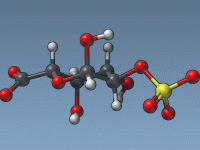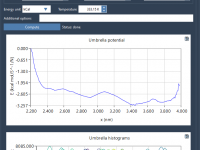Running Python Scripts Inside SAMSON: What You Need to Know
How to Find Molecules with Complex Substructures Using SMILES Manager
The Quiet Power of Protein System Preparation (And How to Do It Right)
Temporary or Saved? Mastering Measurement Labels in Molecular Modeling
Switch Selections Like a Pro with Quick Groups in SAMSON
Clarify Molecular Mechanisms with the Disassemble Animation

Understanding how large molecular assemblies are organized can be challenging when all atoms and components are shown together. Complex biomolecular structures can appear crowded, making it harder to explain mechanisms, discuss design ideas, or create engaging visualizations during scientific presentations.…
Are your umbrella sampling results reliable? Use histograms to find out.
Choosing the Right Unit Cell Shape for Molecular Simulations

When setting up molecular dynamics simulations, especially those involving biomolecules in solution, minimizing unnecessary computation is essential. One often-overlooked factor that can dramatically improve efficiency is the choice of unit cell shape when defining periodic boundary conditions (PBCs). If you’ve…
Tracking Specific Atoms Along Ligand Paths Just Got Simpler

When studying molecular interactions, understanding how specific atoms move along a reaction or unbinding pathway can reveal critical insights. Whether you’re preparing reaction coordinate input files for enhanced sampling, or trying to isolate ligand movement for free energy calculations, exporting…










